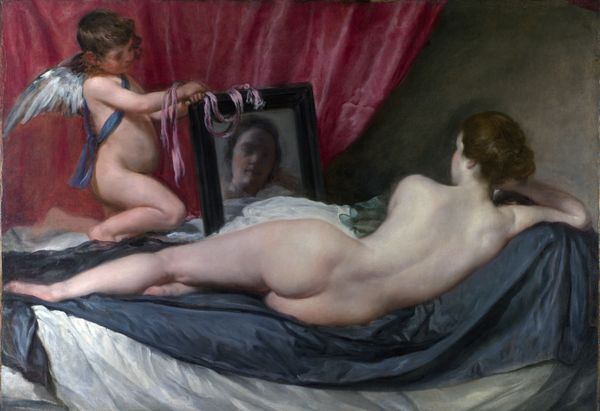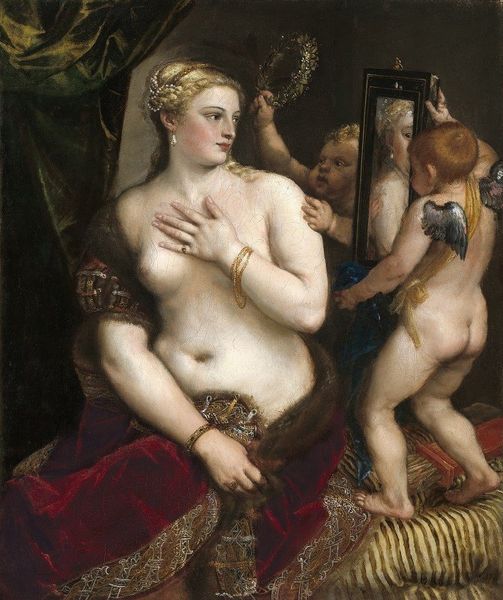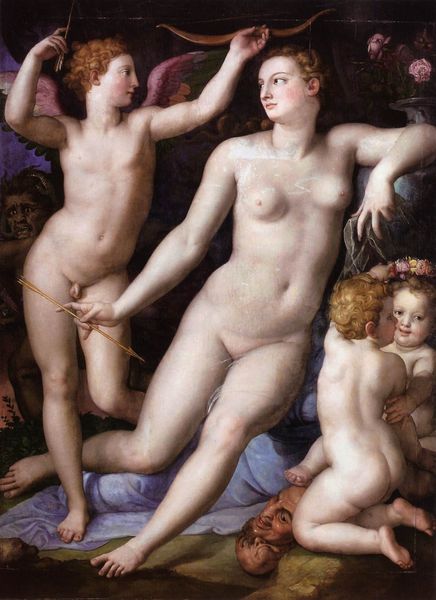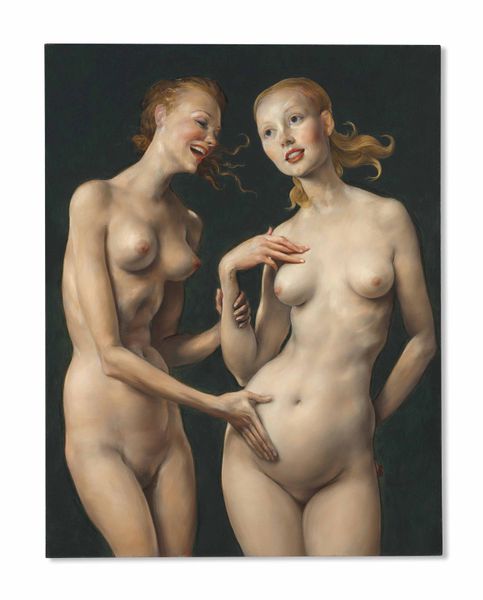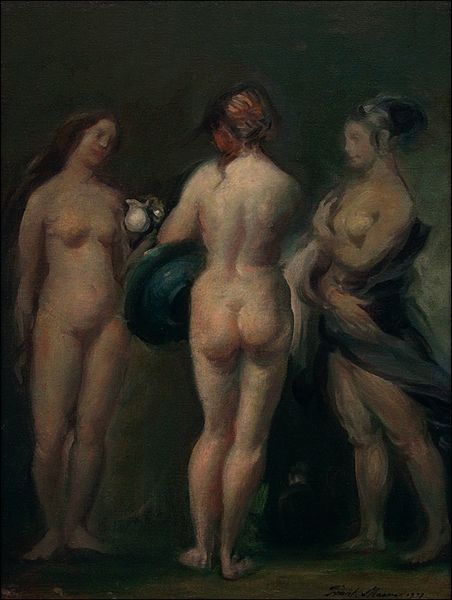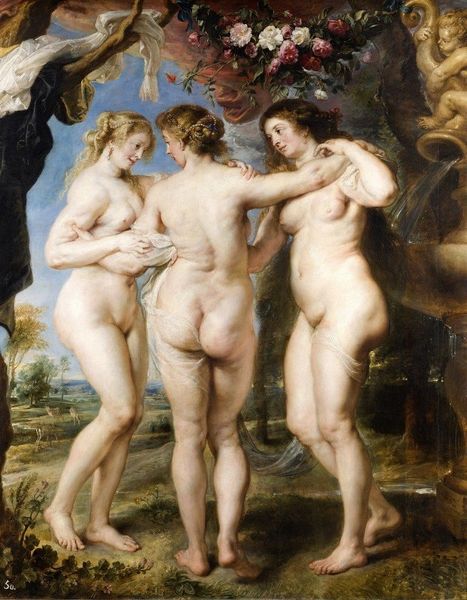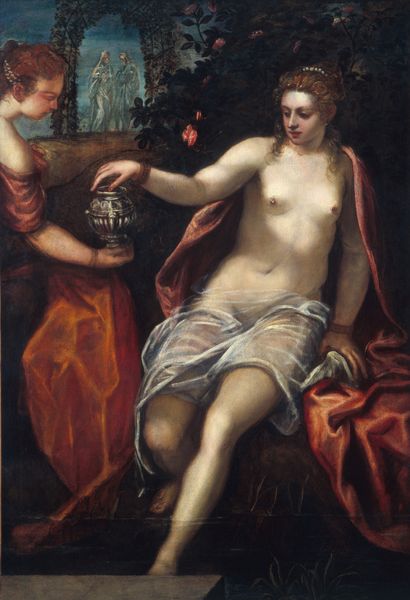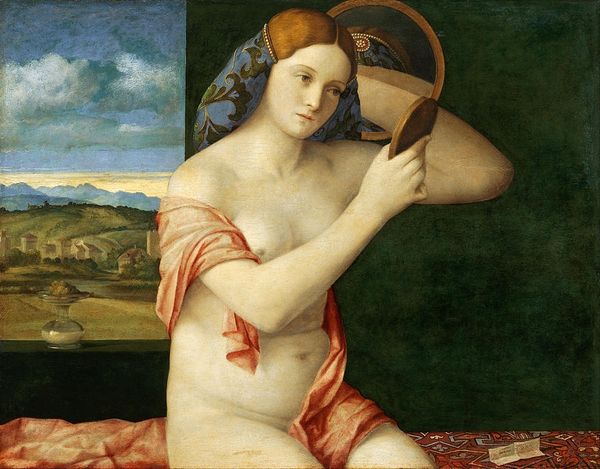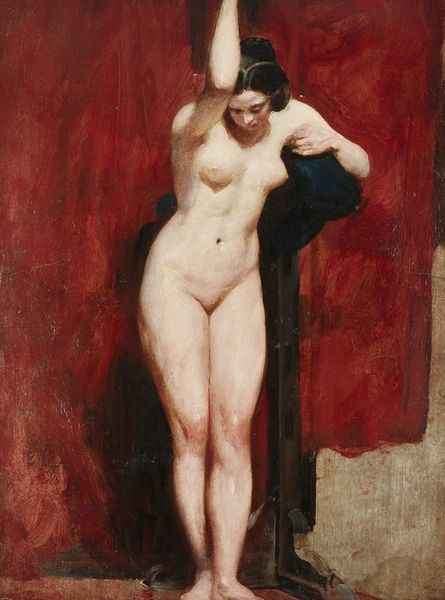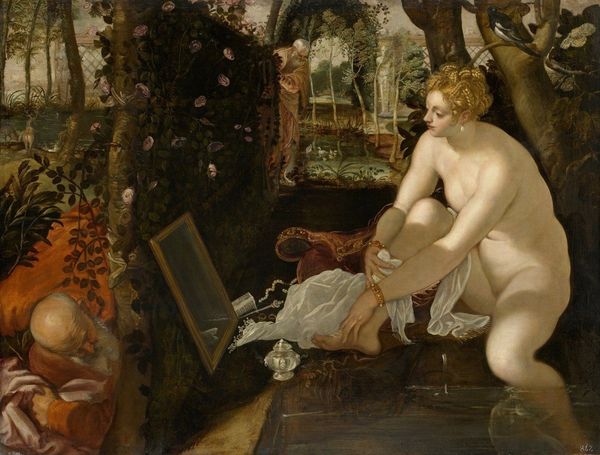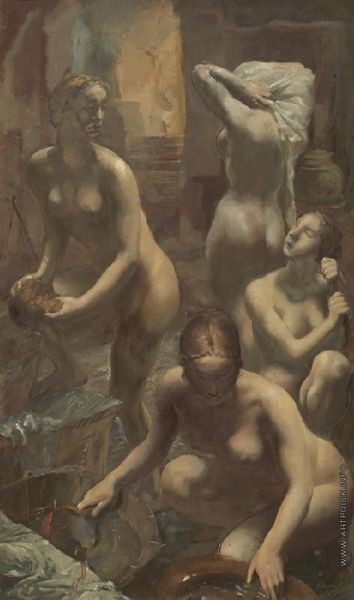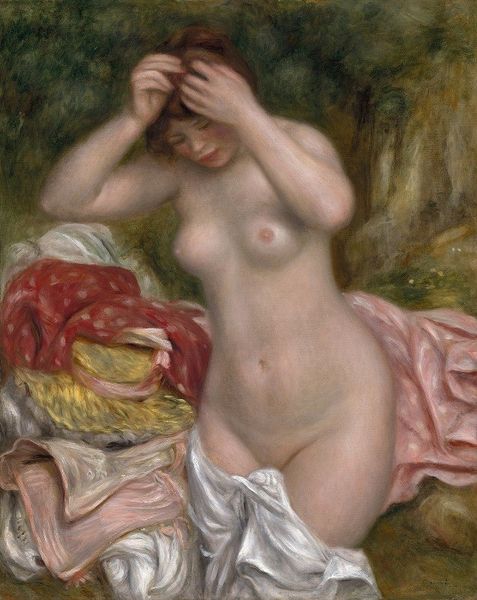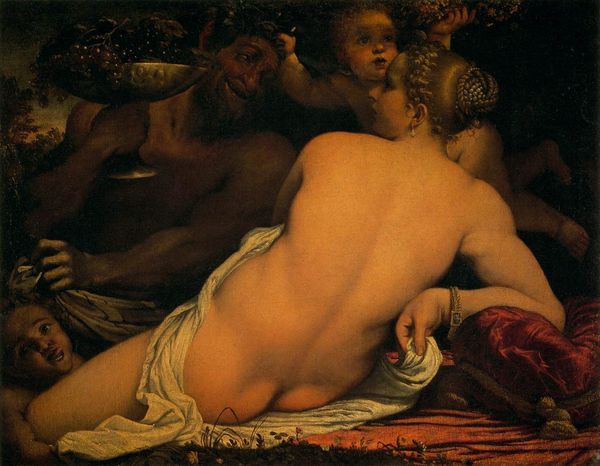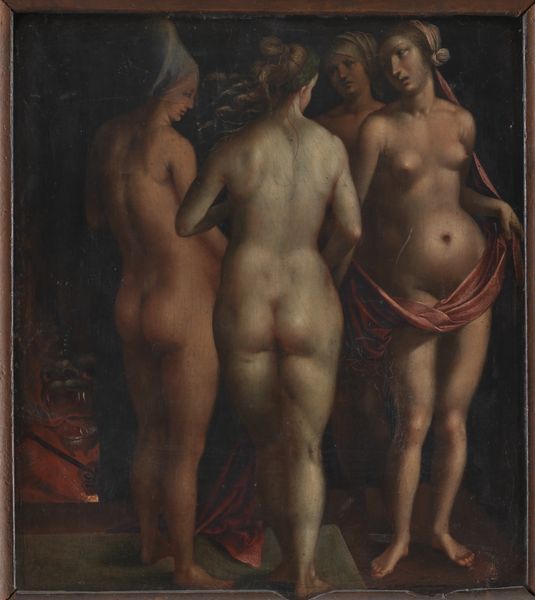
painting, oil-paint
#
portrait
#
allegory
#
baroque
#
painting
#
oil-paint
#
oil painting
#
roman-mythology
#
flemish
#
mythology
#
genre-painting
#
history-painting
#
nude
Copyright: Public domain
Peter Paul Rubens made this painting of Venus at her morning toilet sometime between 1608 and 1640. During this period, Europe was actively colonizing other parts of the world. Within this historical context, Venus’s beauty is heightened through its contrast with the dark-skinned servant who stands behind her. Rubens seems to highlight the ideal of feminine beauty. There is an emotional charge in the way Venus gazes at her reflection, and in the cupid who is holding up her mirror. Yet the Black servant’s gaze is also directed at Venus, making him complicit in the adoration of the white female body. In a society where whiteness was aligned with power and beauty, such representations contributed to the subjugation and marginalization of non-white individuals. By exploring the role of race and power in this artwork, we can better understand how the construction of beauty has been historically intertwined with social and political dynamics.
Comments
No comments
Be the first to comment and join the conversation on the ultimate creative platform.
